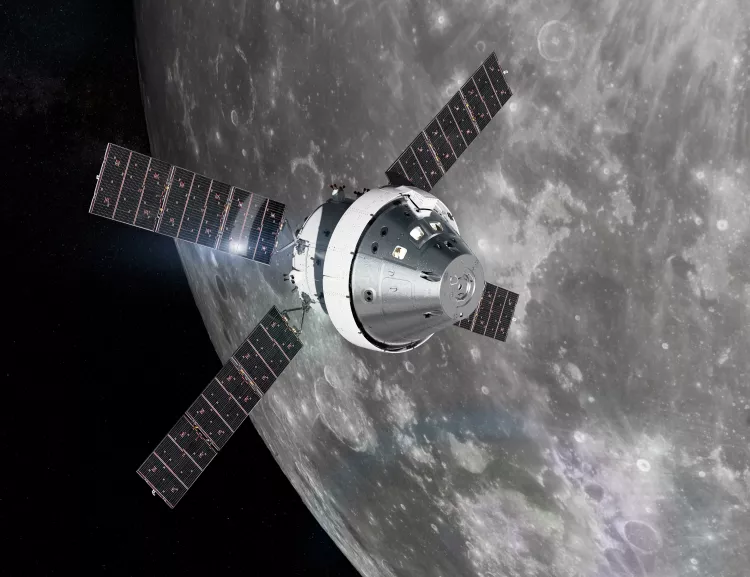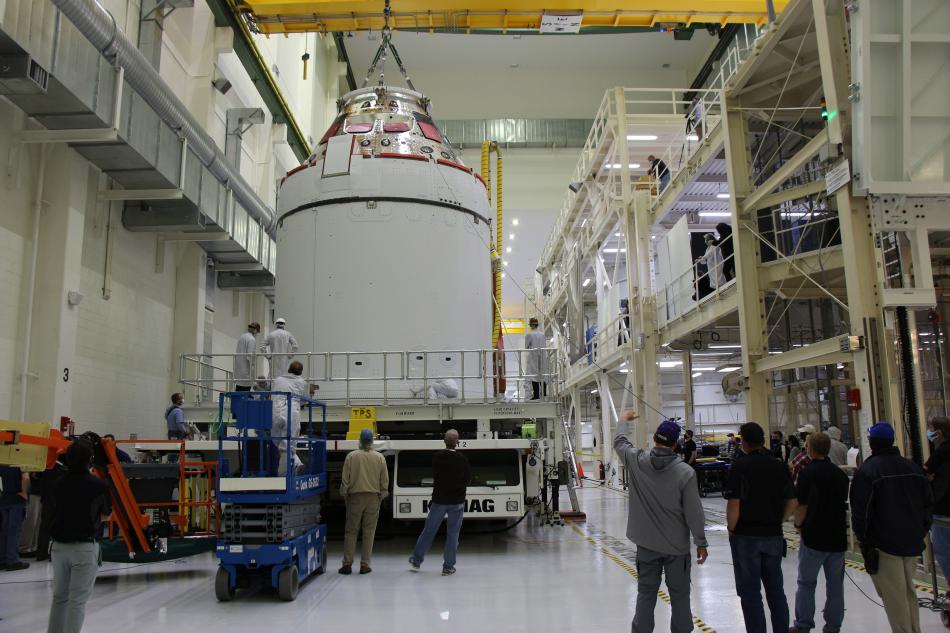
November 16, 2022: The successful launch of NASA’s Artemis I marks the next step in NASA’s return to the Moon under Artemis and preparing the way for human missions to Mars. Artemis I is an uncrewed test flight of NASA’s Orion spacecraft around the Moon, launched atop NASA’s Space Launch System (SLS), the most powerful rocket built to date. TTTech Aerospace is proud to be on board Orion with its TTEthernet® solution used in the spacecraft’s avionics system.
TTTech Aerospace has been working on Orion with Honeywell (avionics system provider), Lockheed Martin (NASA’s prime contractor for Orion) and NASA, since 2006. The first successful Orion test flight, Exploration Flight Test (EFT-1), flew in 2014. Orion has since undergone a series of tests and adaptations in preparation for the launch of Artemis I. TTTech Aerospace’s products are also used in the European Service Module (ESM) supplying propulsion to the Orion capsule, as well as storing fuel, water, oxygen, and nitrogen. In this project, TTTech Aerospace worked together with Airbus Defense & Space and the European Space Agency (ESA).

“We are very excited about the launch of Artemis I and are proud to be on board. For years, we have been working closely with our partners, providing TTEthernet® products used in Orion’s avionics system. The avionics backbone acts as the ‘nervous system’ of Orion, connecting all sensors, computers and actuators with different safety-critical and non safety-critical functions. Using a single network allows to save space, weight and power and therefore demonstrates the future of highly integrated avionics systems,” explains Christian Fidi, Senior Vice President Business Unit Aerospace, TTTech.
NASA’s Orion spacecraft is built by Lockheed Martin Space and designed to sustain harsh deep space environments, protecting the crew from radiation and heat and providing them with highly reliable functions like command and control and life support. All these functions have to interact seamlessly to ensure human safety throughout the mission. TTEthernet® allows to build systems integrating safety-critical and non-critical functions on the same physical media and therefore saving cabling and power to decrease the weight of the overall spacecraft. TTEthernet® is based on the IEEE 802, the ARINC 664, the SAE AS6802 and the recently established ECSS-E-ST-50-16C open standards, allowing seamless integration with legacy Ethernet equipment into the same network and re-use of the wide range of Ethernet testing hardware and tools. This helps customers during the complete spacecraft lifecycle and saves cost.

Honeywell supplies Lockheed Martin and its partners with the guidance, navigation and control platform for Orion. TTTech Aerospace has been partnering with Honeywell for many years, providing the core TTEthernet® building blocks on which they have built their high-performance avionics platform for Orion.
TTEthernet® technology was developed by TTTech Aerospace and standardized as an open SAE standard (i.e. SAE AS6802) in collaboration with NASA and leading industry partners. NASA, ESA, the Canadian Space Agency (CSA) and the Japan Aerospace Exploration Agency (JAXA) have baselined TTEthernet® in the International Avionics System Interoperability Standards (IASIS) for communication networks for deep space missions in 2019 and TTEthernet® was therefore referenced for Artemis. It is already being used in several space exploration programs, such as Orion, ESM, ESA’s Ariane 6 and NASA’s lunar Gateway as well as other launcher and lunar applications. TTEthernet® offers data transfer rates up to 1,000 times faster than those used on previous human spacecraft (rates of up to 10/100/1000 Mbit/s).TTEthernet® is ideal for mixed-criticality networks, allowing seamless integration and reliable data transfer for critical real-time functions like flight controls and life-support systems as well as lower priority data on one single physical network. This achieves savings in space, weight and power (SWaP), as well as cost for integration and testing.
After completion of this first uncrewed test flight, a crewed flight test (Artemis II) will take place, again using NASA’s SLS, Orion and the ESM.
Find out more:
• Artemis I – feature
• Artemis I – mission map/overview (© NASA)
• Artemis I – overview of SLS, Orion, ESM
• Video Artemis I: NASA’s Plans to Travel Beyond the Moon
• NASA’s Orion spacecraft
• ESA’s European Service Module (ESM)